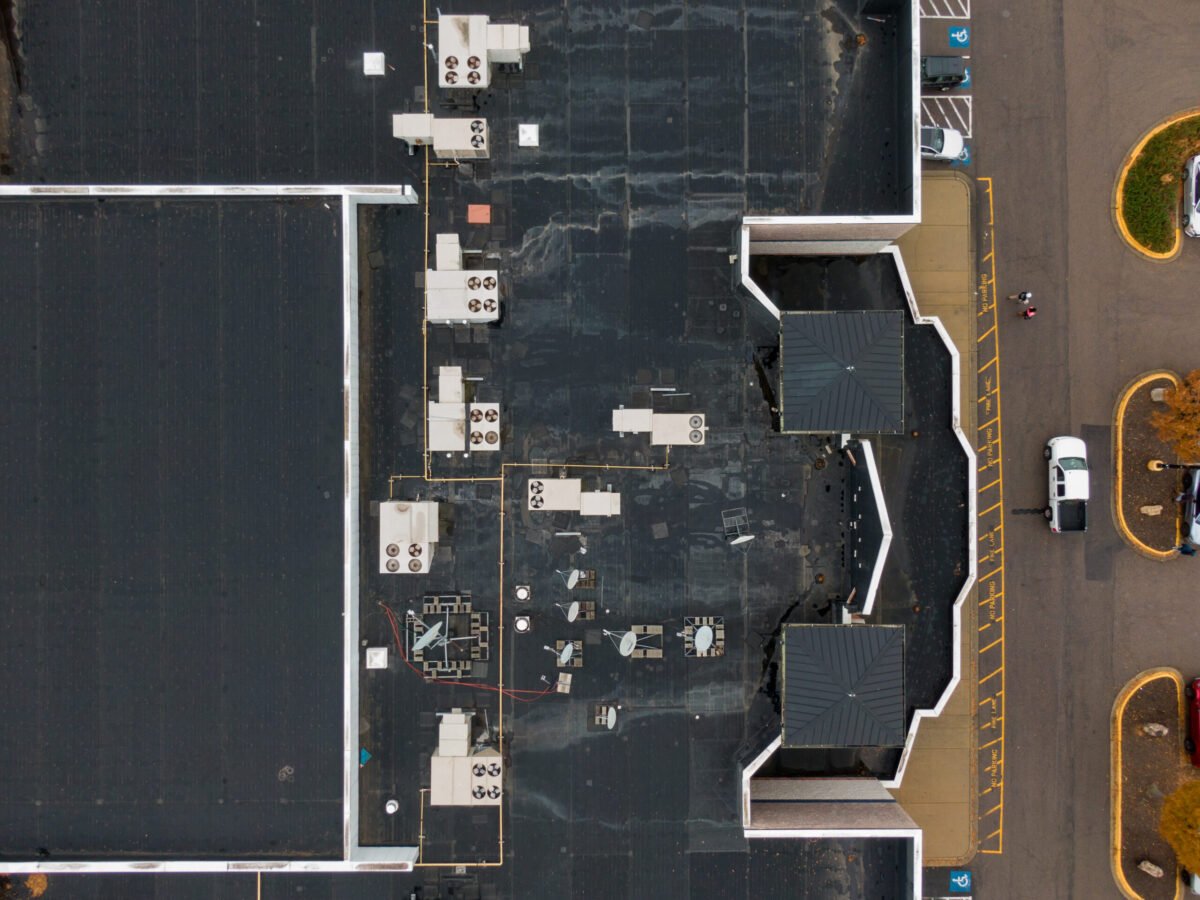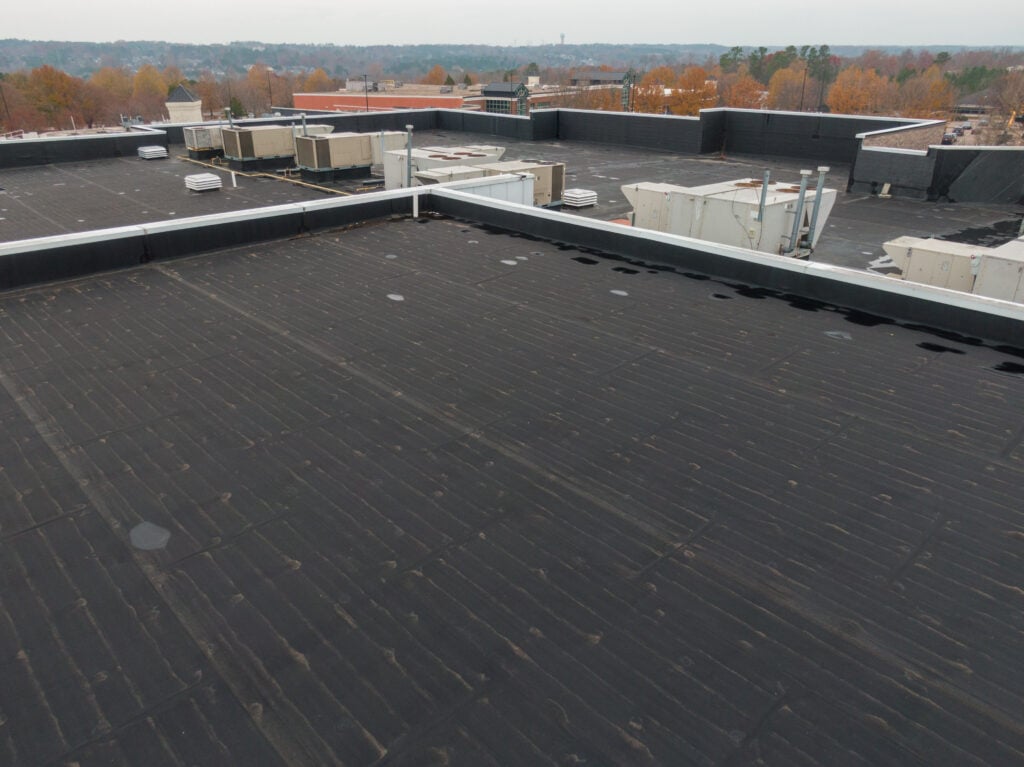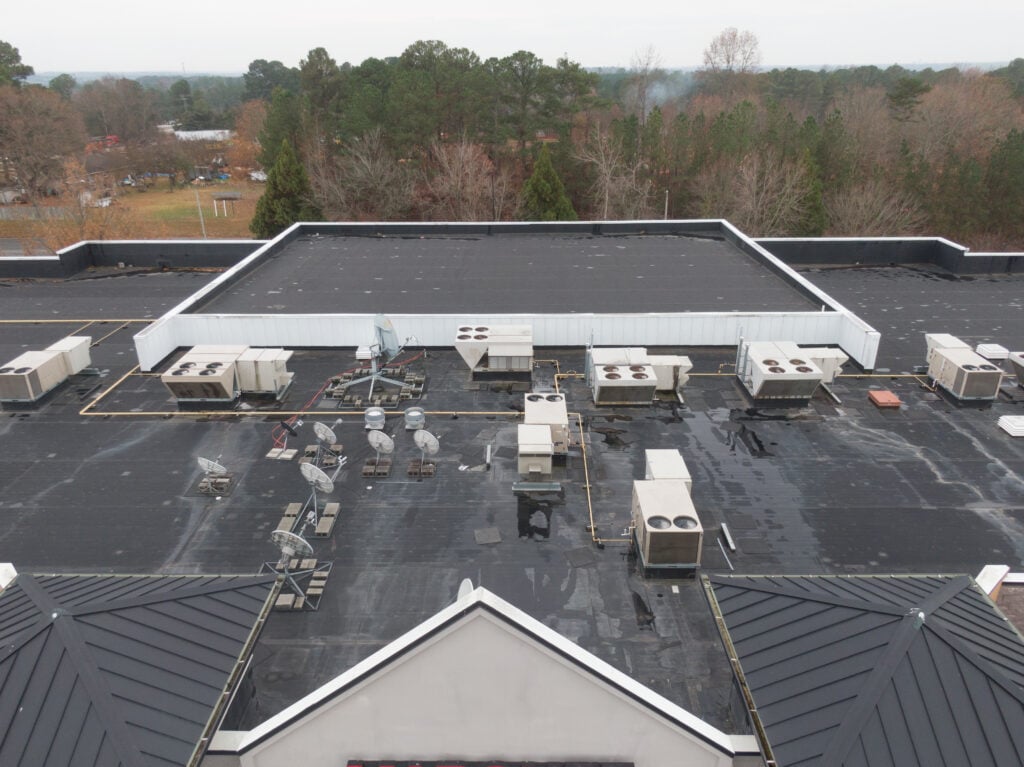
6 Min Read

TPO (thermoplastic polyolefin) roofs are popular for commercial buildings because they’re durable and energy-efficient. But like any roofing system, they need repairs from time to time. Learning how to repair a TPO roof properly can save you money and prevent costly damage to your building.
This guide covers everything you need to know about TPO roof repairs. We’ll walk you through identifying common problems, understanding when to call professionals, and following proper repair techniques. You’ll also learn about the tools and materials needed, safety precautions to take, and maintenance tips to prevent future issues.
Here’s what we’ll cover:

TPO roofing consists of a single membrane made from thermoplastic polyolefin. This white or light-colored membrane reflects sunlight and helps reduce cooling costs. The membrane is typically attached to the roof deck using mechanical fasteners, adhesives, or ballast systems.
Understanding how your TPO roof works helps you identify problems early. The membrane creates a watertight seal across your entire roof surface. Any breaks, tears, or separations in this membrane can allow water to penetrate into your building.
Common areas where TPO roofs develop problems include seams between membrane sheets, around roof penetrations like vents and HVAC units, and at roof edges where the membrane meets flashing or parapet walls.

A clear 7-step TPO roof repair process ensures effective, long-lasting results while minimizing costly mistakes. Following a structured approach helps maintain your roof’s durability and protects your property.
Begin every repair project with a comprehensive damage assessment. Walk the entire roof surface carefully, documenting all problem areas with photos and measurements. This helps you understand the scope of work and gather the right materials.
Mark damaged areas with chalk or removable tape so you can find them easily when you’re ready to make repairs. Pay special attention to seams, roof penetrations, and edge details where problems commonly develop.
Proper surface preparation is critical for lasting TPO repairs. Clean the damaged area and surrounding membrane with TPO cleaner, removing all dirt, debris, and contaminants. The repair area should extend at least 6 inches beyond the actual damage.
Use clean rags and avoid pushing dirt around the surface. Allow the cleaned area to dry completely before proceeding with repairs. Any moisture or contaminants will prevent proper adhesion of patches and sealing materials.
Measure the damaged area and cut your TPO patch material to size. The patch should extend at least 3 inches beyond the damage in all directions. Round the corners of rectangular patches to prevent them from lifting over time.
Clean both sides of the patch material with TPO cleaner. This removes any manufacturing residue or handling contamination that could interfere with bonding.
Apply TPO primer to both the roof membrane and the patch material according to manufacturer instructions. This typically involves applying thin, even coats and allowing proper flash-off time before bonding.
Position the patch carefully over the damaged area, ensuring complete coverage. Use a pressure roller to work out air bubbles and create uniform contact between surfaces. Apply firm, consistent pressure across the entire patch area.
Use a heat gun or hot air welder to create a permanent bond along patch edges. Apply heat evenly while using a pressure roller to ensure the thermoplastic materials fuse together properly. The goal is to create a seamless connection between the patch and existing membrane.
For seam repairs, apply seam tape along the joint and use heat welding to bond it permanently. This provides extra reinforcement in high-stress areas.
After completing repairs, test them carefully for proper adhesion and seal integrity. Gently try to lift patch edges to ensure they’re securely bonded. Look for any gaps or areas where the bond might be incomplete.
Perform a water test if possible by pooling water over the repair area and checking for leaks from below. This is the most reliable way to verify that your repair is watertight.
Take photos of completed repairs for your maintenance records. Document the materials used, repair techniques, and any observations about the roof condition. This information helps track roof performance over time.
Plan to inspect repairs periodically, especially after severe weather events. Early detection of any problems allows for quick corrective action before major issues develop.

Some TPO roof repairs require professional expertise and equipment.
Large tears, extensive seam failures, or structural damage should always be handled by qualified contractors. DIY repairs can void warranties and lead to potential liability issues.
Contact professionals if damage spans more than a few square feet or requires multiple repairs across the roof. This often signals deeper issues needing thorough evaluation and repair.
Repairs near roof edges, penetrations, or intricate details need specialized skills. Professional contractors are experienced in handling these challenging areas, ensuring proper integration with existing systems.
If you’re unsure about any part of the repair process, it’s best to call in the experts. Professional repairs are typically far cheaper than fixing mistakes or addressing water damage caused by failed DIY attempts.
Regular maintenance significantly extends TPO roof lifespan and prevents many common problems.
Schedule professional inspections at least twice a year, ideally in spring and fall. These inspections help identify developing issues before they require major repairs.
Keep the roof surface clean and free of debris. Remove leaves, branches, and other materials that can trap moisture or cause physical damage. Regularly clear drainage systems to prevent water ponding.
Trim nearby trees to prevent branches from scraping the roof surface. Even small branches can cause significant damage during wind events. Falling leaves can also clog drains, so regular maintenance is necessary.
Fix minor issues like small punctures, loose seams, or lifting edges promptly. These are easier and less expensive to repair when caught early.
Monitor roof traffic carefully. Limit access to essential maintenance activities and ensure anyone on the roof uses proper techniques and protective equipment. Consider installing walkway pads in frequently accessed areas.
While understanding how to repair a TPO roof can help you make informed decisions about your commercial roofing system, many repairs require professional expertise to ensure lasting results. Complex damage, extensive repairs, or warranty considerations often make professional service the smart choice.
Don’t let TPO roof problems compromise your business operations or property value. Contact Kingfisher Roofing todayfor a professional inspection and repair estimate. Our responsive team is ready to help you maintain a reliable, watertight roofing system that protects your commercial investment.